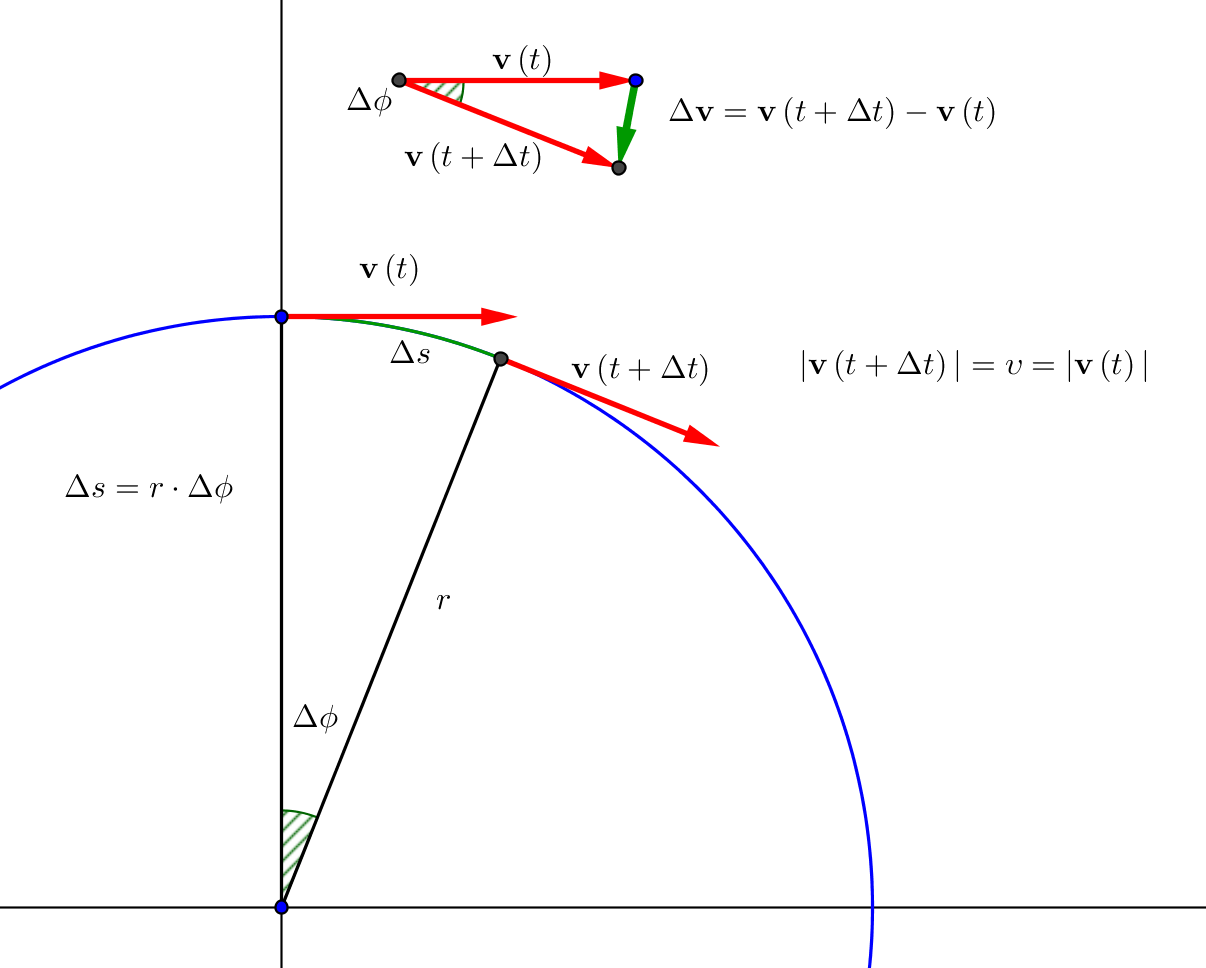How do you prove #a=v^2/r# and #a=r\omega^2# using a circle and vector diagram?
I know you start off with a circle and two points on the circumference. Each point has an arrow tangent to the circle and are facing the same way (in terms of rotation).
Then, you connect the two points to the center, and label each line #r# , and the angle between them #\theta# .
The vector diagram has the two arrows connected tail to tail, with an angle of #\theta# . An arrow is drawn from head to head, and is the force provided (#abs(v_1)+abs(v_2)# ). It also has something to do with #sin\theta=\theta# for very small angles or something similar.
I'm not sure where to go from there.
Please do not use derivative, and other vector stuff. Also include diagrams.
I know you start off with a circle and two points on the circumference. Each point has an arrow tangent to the circle and are facing the same way (in terms of rotation).
Then, you connect the two points to the center, and label each line
The vector diagram has the two arrows connected tail to tail, with an angle of
I'm not sure where to go from there.
Please do not use derivative, and other vector stuff. Also include diagrams.
1 Answer
See the expplanation below
Explanation:

The acceleration is
The angular velocity is
Addition
For small angles
Dividing by

